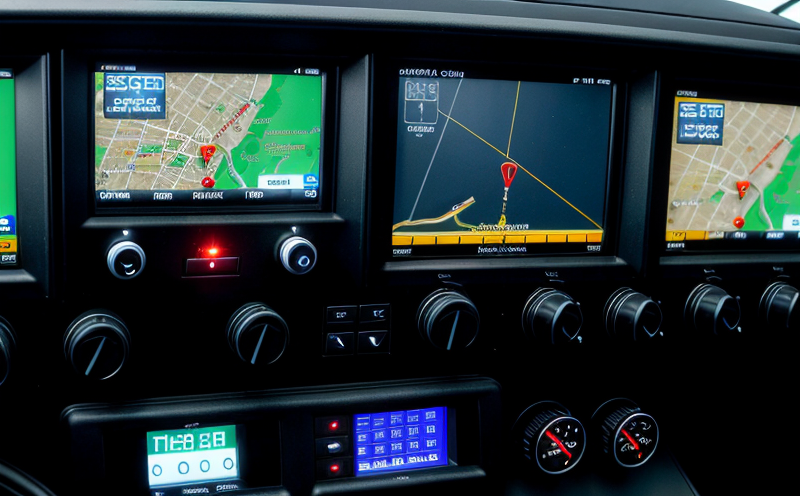USCG 33 CFR Part 84 Signal Light Position & Visibility Testing
The United States Coast Guard (USCG) regulations outlined in 33 CFR Part 84 are critical for ensuring that navigation lights and signaling systems on vessels meet the highest standards of safety, visibility, and reliability. This service focuses specifically on the testing procedures detailed in 33 CFR Part 84, which governs the position and visibility requirements for signal lights.
The goal of this testing is to ensure that navigation lights are positioned correctly to avoid collisions and to be visible from a sufficient distance, enhancing maritime safety. The testing involves both laboratory simulations and field evaluations, ensuring compliance with international standards such as ISO and ASTM. Our service ensures that signal lights meet the stringent requirements of the USCG, thereby protecting both maritime personnel and the public.
The testing process begins with careful inspection and preparation. Signal lights are placed in a controlled environment where their positioning is verified against 33 CFR Part 84 specifications. This includes checking the angle at which each light is installed to ensure it meets the required angles for visibility from various directions.
The next step involves measuring the light's intensity and color, ensuring compliance with standards that dictate the colors (red, white, green) used in different navigation scenarios. The light's performance is evaluated under both static and dynamic conditions to simulate real-world usage on moving vessels. This includes testing the light’s ability to be seen from a specific distance, which is critical for maritime safety.
Our facility uses state-of-the-art equipment that replicates actual environmental conditions at sea. This allows us to test signal lights under various weather and lighting conditions, ensuring they perform optimally in all circumstances. The testing also includes checking the light's flash rate, which must be precise to ensure it is easily recognized by other vessels.
The results of these tests are meticulously documented, and a comprehensive report is prepared detailing any deviations from the required standards. These reports are essential for compliance purposes and can also provide valuable insights for ongoing product improvements. Our service ensures that every aspect of signal light positioning and visibility is thoroughly evaluated to meet the stringent requirements set by 33 CFR Part 84.
| Parameter | Description |
|---|---|
| Positioning Angle | The angle at which the signal lights are installed relative to the vessel's axis. |
| Light Intensity | The measured brightness of each light, ensuring it meets the required standards for visibility. |
| Flash Rate | The frequency with which the lights flash, critical for signal recognition. |
| Color Compliance | The color of the lights and whether they conform to the specified colors for different navigation purposes. |
This comprehensive approach ensures that all aspects of 33 CFR Part 84 are adhered to, providing peace of mind for quality managers, compliance officers, R&D engineers, and procurement teams. By focusing on these critical parameters, we ensure that signal lights are not only compliant with USCG regulations but also perform optimally in real-world conditions.
Applied Standards
The testing of navigation lighting systems for compliance with 33 CFR Part 84 is guided by several key international standards. These include:
- ISO 9001: Quality Management Systems
- ASTM E1843-18 Standard Practice for Testing and Evaluating Visibility of Navigation Lighting Devices
- USCG 33 CFR Part 84
These standards provide the framework for our testing procedures, ensuring that every aspect of signal light positioning and visibility is thoroughly evaluated. Compliance with these standards not only ensures legal compliance but also enhances safety in maritime environments.
Scope and Methodology
The scope of this service includes the comprehensive evaluation of navigation lighting systems to ensure they meet the stringent requirements set forth by 33 CFR Part 84. This involves a detailed examination of various aspects including positioning, light intensity, color compliance, and flash rate. The methodology for testing these parameters is outlined below:
| Aspect | Methodology |
|---|---|
| Positioning Angle | The angle at which the signal lights are installed relative to the vessel's axis. This is verified using specialized instruments that replicate real-world conditions. |
| Light Intensity | The light output is measured in candela, ensuring it meets specified visibility distances and color requirements. |
| Flash Rate | The frequency of the signal lights' flash cycle is checked using timing equipment to ensure it falls within the required range for optimal recognition. |
| Color Compliance | The color of the lights is evaluated against international standards to ensure they are correctly identified by other vessels in various navigation scenarios. |
The testing process is conducted in a controlled laboratory environment, followed by field evaluations to simulate real-world conditions. This dual approach ensures that signal lights meet not only legal requirements but also perform optimally under diverse environmental and operational conditions.
Quality and Reliability Assurance
Ensuring the quality and reliability of navigation lighting systems is paramount for maritime safety. Our service employs several measures to uphold these standards:
- Calibration of Equipment: All testing equipment is regularly calibrated to ensure accurate measurements.
- Consistent Testing Protocols: Standardized protocols are followed for every test, ensuring consistency and repeatability.
- Training of Personnel: Our staff undergo continuous training to stay abreast of the latest standards and testing techniques.
- Quality Control Checks: Rigorous quality control checks are performed at various stages of the testing process.
We also provide detailed reports that document every aspect of the testing process. These reports are invaluable for compliance purposes and can guide ongoing product improvements. Our commitment to quality and reliability ensures that navigation lighting systems meet the highest standards, enhancing maritime safety.





